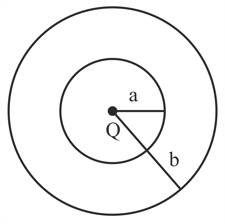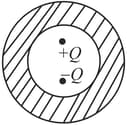In the figure, the inner (shaded) region represents a sphere of radius , within which the electrostatic charge density varies with the radial distance from the center as , where is positive. In the spherical shell of outer radius , the electrostatic charge density varies as . Assume that dimensions are taken care of. All physical quantities are in their SI units.
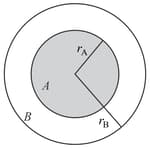
Which of the following statement(s) is/(are) correct?

Important Questions on Electrostatics
Consider a region in free space bounded by the surfaces of an imaginary cube having sides of length as shown in the figure. A charge is placed at the centre of the cube. is such a point outside the cube that the line perpendicularly intersects the surface at and also . A charge is placed at point also. What is the total electric flux through the five faces of the cube other than
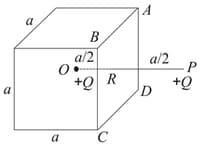
for
for .
does not depend on x and y. If this potential is generated by a constant charge per unit volume (in units of ) which is spread over a certain region, then choose the correct statement.
Given below are two statements
Statement : An electric dipole is placed at the centre of a hollow sphere. The flux of electric field through the sphere is zero, but the electric field is not zero anywhere in the sphere.
Statement : If is the radius of a solid metallic sphere and be the total charge on it. The electric field at any point on the spherical surface of radius is zero but the electric flux passing through this closed spherical surface of radius is not
In the light of the above statements, choose the correct answer from the options given below:
What is the electric flux for Gaussian surface A that encloses the charged particles in free space? [Given:

Arrangement of charges are shown in the figure. Flux linked with the closed surface and respectively are ________ and ________ .
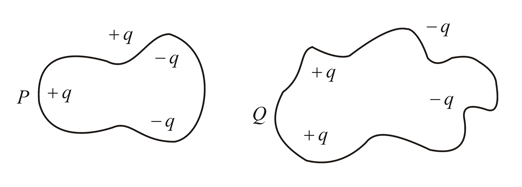
Let the electrostatic field, at distance, from a point charge, not be an inverse square but instead an inverse cubic, e.g. , here is a constant. Consider the following two statements: (I) Flux through a spherical surface enclosing the charge is, . (II) A charge placed inside a uniformly charged shell will experience a force. Which of the above statements are valid?
